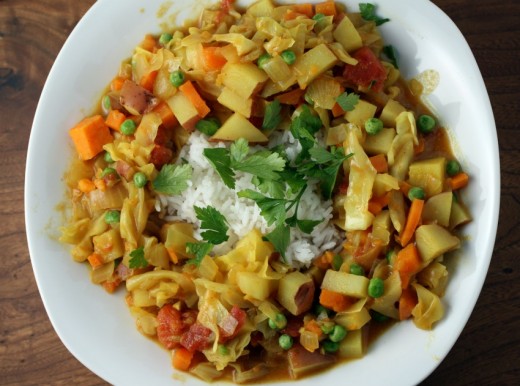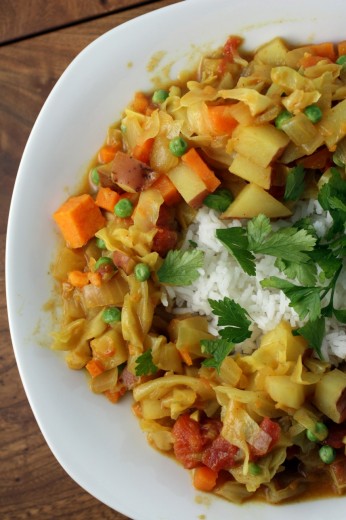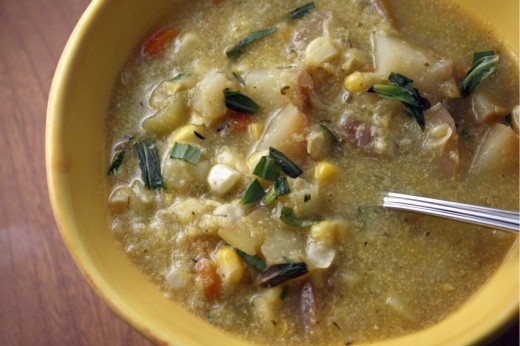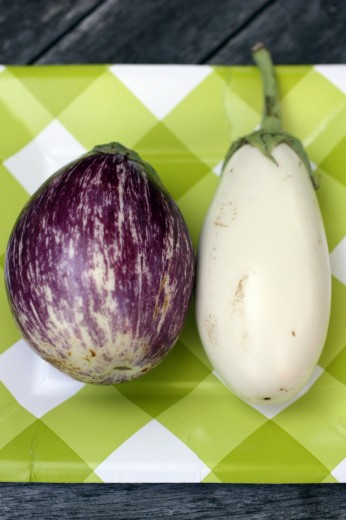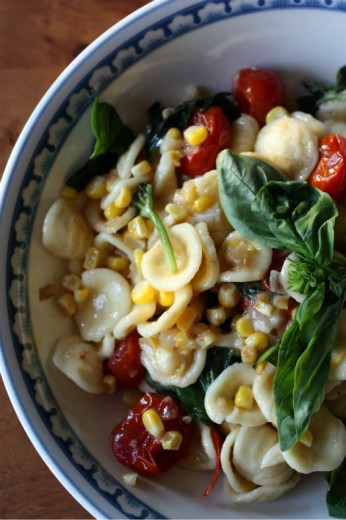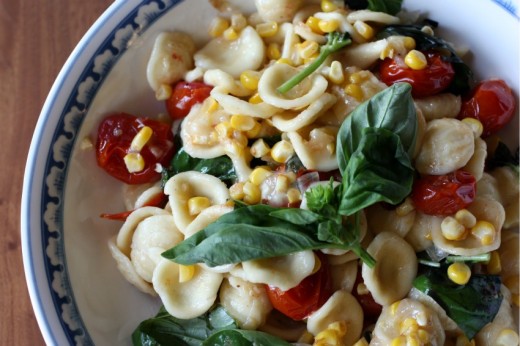How do you feel about cilantro? If you think about it, it’s a fascinating herb. You will find it in many culture’s food that is quite different from one another. Indian, Mexican, and Southeast Asian cooking, for example. Being a huge fan of Indian, Mexican, and Southeast Asian food, I can’t imagine my life without cilantro. It is probably the herb I use most in my cooking, with the possible exception of thyme, and that is because I have thyme growing at the bottom of the stairs to my house.
I understand that some people don’t like cilantro. And by not liking it, I mean they have a true aversion to it. I had a doctor in one of my Thai cooking classes and she said that is indeed true that some people carry a gene that makes cilantro taste like soap. So if you carry that gene, my apologies and seeing as this recipe has an entire bunch of cilantro in it, this dish is not for you. Sorry.
This is a favorite dish from Jack Bishop’s A Year in a Vegetarian Kitchen. It is one of those recipes that takes next to no time and yet produces a seriously tasty result. You start an onion sautéing on the stove, whir together some tomatillos, jalapeños, oregano, and a lot of cilantro in a blender, mix it all together with some hominy, and let it cook for about 15 minutes. While it cooks, you thinly slice some romaine lettuce, radishes, quarter some cherry tomatoes, and cube some avocado. Ladle the hominy mixture in a bowl, top it with the fresh stuff, and dinner is served. Randy and I like heat so I seeded one of the jalapeños and left the seeds and membranes in the other one. It was perfect for us but if you are unsure – go ahead and seed both of them.
Finally, just to answer some questions about hominy. Hominy is a type of corn but it is much starchier and larger than the corn kernels that we know and love. Its texture and size is necessary here – regular corn would make this a rather anemic stew. I found mine in canned vegetable aisle near the corn. White or yellow works.
One Year Ago: Brown Rice Bowl with Soy Sauce Marinated Tofu and a Fried Egg
Three Years Ago: Potato Fennel Gratin
Posole Verde
Adapted from A Year in a Vegetarian Kitchen
Serves 4
My only word of warning is that the cilantro mixture, which is vibrantly green in the blender, will turn a mossy shade of green as it cooks. Do not be alarmed, the vegetable mixture on top is nice and colorful.
1 bunch coarsely chopped cilantro stems and leaves (about 2½ cups)
¼ cup fresh oregano leaves
6 ounces tomatillos, husked, washed, and halved
2 medium jalapeños, stemmed and seeded
2½ cups water
Canola oil
1 large onion, chopped
4 medium garlic cloves, minced
2 15-ounce cans white or yellow hominy, rinsed and drained
Sea salt
Garnishes
1 medium head romaine lettuce, thinly sliced crosswise
Handful cherry tomatoes, quartered
4 medium radishes, thinly sliced
1 small avocado, diced
Flour or corn tortillas, warmed
Place the cilantro, oregano, tomatillos, chiles, and 1 cup of the water in a blender and purée, scraping down the sides of the jar as necessary, until smooth, about 1 minute.
Place a sauté pan over medium heat. Drizzle in just enough canola oil to coat the bottom then add the onion along with a large pinch of salt. Cook until golden, about 6 minutes. Add the garlic and cook until fragrant, another minute or so. Add the cilantro mixture, hominy, remaining 1½ cups water, and bring to a boil. Reduce the heat and simmer to blend the flavors, about 15 minutes. Adjust the seasoning, adding salt to taste.
Ladle the posole into bowls and serve immediately, passing the lettuce, tomatoes, radishes, avocado, and tortillas at the table.
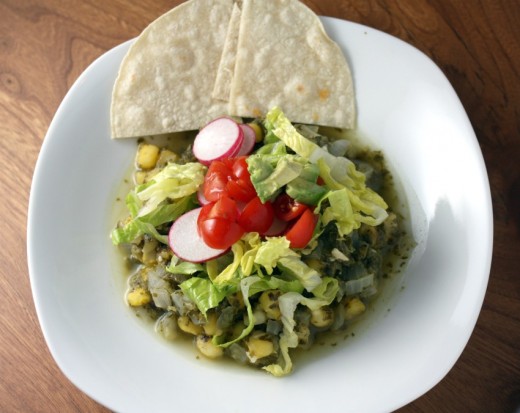

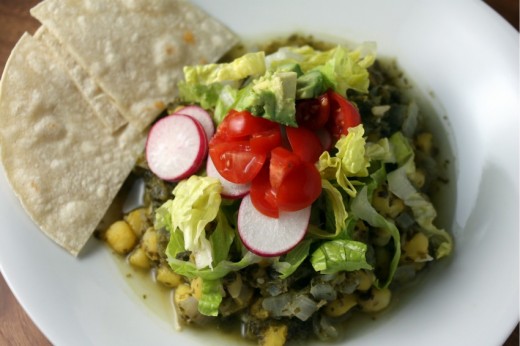

 Share
Share